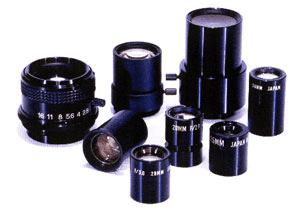High resolution lenses for machine vision — standard and custom lens design
Robotic Vision Devices Aid Inspection Processes
High Resolution Lenses for machine vision, instrumentation, inspection and vibration-sensitive applications. Standard and custom hi-res lens assemblies.

Robotic Vision Devices Aid Inspection Processes
Robotic demonstrations in the industrial field typically involve a “pick and place” action; at its core that means to select a particular object in one area and move it to another point as input into a computer program. Pick-and-place robotic technologies have undergone multiple advances and one of those is the ability to employ vision technologies into the systems. A manager at National Instruments was quoted as saying, “The incorporation of vision enables a robot to pick up and place a variety of parts as well as change tasks because it can see which part it is dealing with and adapt.” This means that a manufacturer will no longer need to wait for a human to undertake a visual inspection at the end of the production process because the image can be taken during the pick-and-place operation or any other point chosen during the operation.
In the past, a major limitation to a visual inspection by the robotic device was because of the high cost of additional processing power and the availability of affordable imaging sensors; these two factors are no longer as much of an issue because of the strides made in technological advances.
A technology area that as benefitted from the enhanced technology is in the semiconductor wafer processing manufacturing area; visual robotic inspections has enhanced the production line and also speeds up the inspection process. The robotic vision is more accurate in detecting “minor imperfections in freshly cut chips,” and this allows for the machines that manufacture the chips to be recalibrated to address the imperfections; this can be done midstream, or whenever a defect is noted, and this saves money and time in lost manufacturing processes and in materials.
Another field that has seen a dramatic upturn in technology is in mobile robotics; these devices need access to “sophisticated imaging capabilities” so they can perform such tasks as avoiding obstacles to visual simultaneous localization and mapping. It’s believed that in the next decade robotic vision systems will eclipse the number of systems currently utilizing fixed base robot arms and non-moveable devices.
With the increases in availability of the technology and the decreasing costs of manufacturing them, which leads to a more affordable product to the end-user, it’s believed that robotic inspection systems will become the norm in many manufacturing plants. While the technology may cost more up front, manufactures will find they reap the rewards at the back end in employee costs and loss of time and materials.